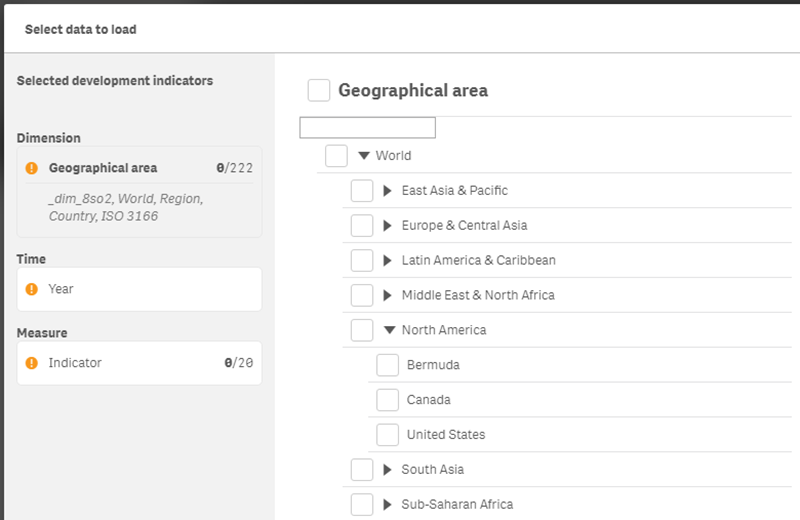Qlik DataMarket data sets contain dimensions, measures and time periods. Dimensions define the context of the data, such as country, age group, or gender. Measures contain numeric data that relates to the context in the dimensions. Time periods specify the years or other periods for which to display the measures.
Data sets contain at least one dimension and one measure, and they all have time dimensions. Before you can add data to an app, you must select at least one dimension and one measure and set the time period. When selecting dimensions, you must include dimensions that contain data. When data is structured hierarchically, it is possible that a parent branch does not contain data.
For more information, see Selecting hierarchical data from Qlik DataMarket.
Some dimensions contain multiple representations of the data. For example, geographical locations designated by country name also contain ISO (International Standards Organization) codes for the countries. Currencies contain regular names, such as Pound sterling and Euro, as well as their ISO 4217 code--GBP and EUR. The extra values for the dimensions are not separately selectable. They are displayed in the description of the dimension.


In some data sets, it is not necessary to select a measure because the data set contains only one measure. Measure selections are displayed only when there is more than one measure to choose from. For example, the data set US per capita personal income by state displays only the geographic dimension and the time period because there is only one measure in the data set--per capita personal income.
There are also data sets that do not require dimension selections. For example, the data sets US federal interest rate and US consumer price index for urban consumers require only that you select the time period because there is only one dimension and one measure in those data sets. In the first case, the measure is the federal interest rate, and the dimension is the United States. In the second case, the measure is the consumer price index, and the dimension is United States urban consumers.
Data sets may contain only dimensions that have no accompanying data for measures. A data set may contain, for example, only a list of company chief executives (CEOs). In such cases, the dimension is preselected because there are no selections to be made within the dimension.
